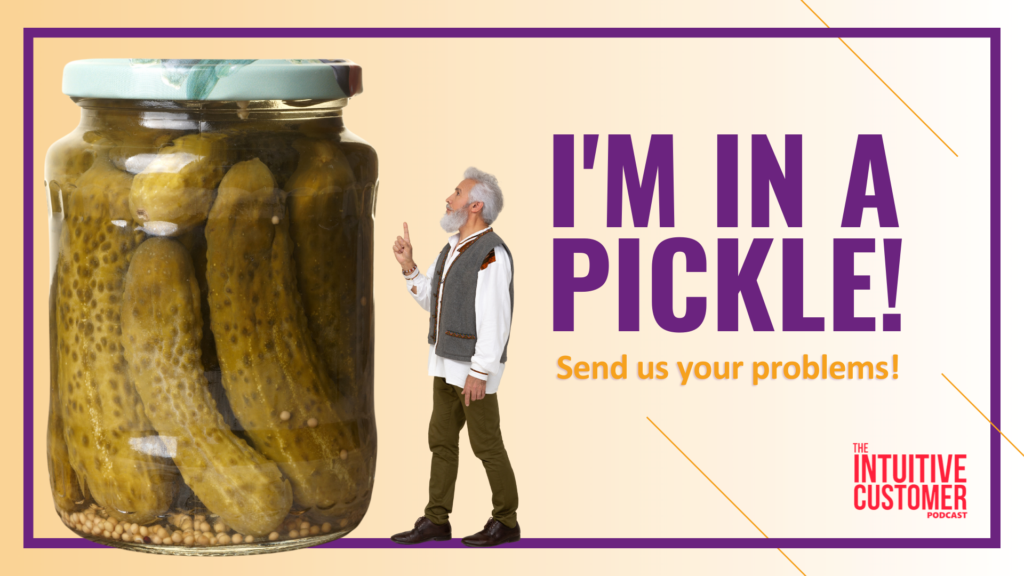On the Apple phone the other day, it suggested widgets to me of apps I might want to use. The phone notices that I want to use the apps at a particular time of day, so it pushes them to me proactively. Providing proactive experiences is part of the future I see for Customer Experience, a side effect of Customer Science.
For those who read this newsletter, you know that Customer Science is where we have a convergence of artificial intelligence (AI), data, and behavioral sciences. So, how can you create a proactive experience in your organization? As Vasili Triant , Chief Operating Officer of UJet, explained on a recent podcast, many go-to-market activities can help in this effort.
Triant explains that UJet is a pioneer in the next generation of cloud contact center applications, typically called cloud contact center as a service. Triant has been with the company for over two years, but in this area for over 20.
Defining Proactive
The definition is a bit fluid at the moment. Triant thinks the best way to define proactive customer experience is to describe how a company reaches out to solve a problem before the customer contacts them. By interpreting some indicators that have been programmed, the application will reach out to resolve a perceived customer need. Effectively, it’s doing something for the customer before they ask for it to be done.
So, why would customers want a company to provide a proactive experience? Triant says that it makes customers happier. Also, the proactive experience indicates that you offer a personal experience for them, making customers feel important and appreciated. Moreover, these positive engagements drive an improved lifetime value that makes customers feel like returning.
Triant thinks these types of customer service interactions help counteract the negative ones.

I would add that proactive experiences also save organizations money by preempting a contact at the contact center. As customers, we often think of that time on hold or in customer service from our perspective. However, the company also pays for that time in labor, technology, and many other cost centers.
Building a Proactive Experience
There are a few things an organization can do to build this positive engagement tool for customer service. First, it starts with understanding your customers, which involves customer segmentation, which means dividing them into like groupings with targeted approaches that appeal to what they have in common and value collectively.
Another essential part of understanding the customer is going deeper than how much money they spend or where they live. In other words, organizations would be best served if they understood customer motivations. Motivations are better tracked by watching what customers do rather than listening to what they tell you. As they say, actions speak louder than words.
Triant agrees, adding that recruitment is the first place to start building a proactive experience. Triant says hiring the right people can pave the way for change. He explains that organizations research technology or processes, but the lynchpin for success is having people willing to make the change and take the risk. If the people you hire understand what a journey like this is, even better. Triant thinks the industry is flooded with people that want to do what they always have, but incrementally better. Change is something most people avoid because of the challenges it presents. But, if you haven’t got people willing to change, you can’t go anywhere new.
Triant says that once you have the right people, the second part is figuring out what customers get from you and where they get it. For example, it is a good idea to know your customers’ channel preferences, meaning email, text, etc. However, he also says that these channels are likely to become Apps, like social media platform preferences, instead of communication channel preferences. Knowing this information about customers lets you be proactive with them where they want you to contact them.
Triant also implores organizations to consider what they are doing with their data.

He would encourage them to use it to compare what happened historically to today. If you are looking at data across thousands of interactions, what were the best responses, the answers that conveyed the best sentiment? Which interactions created the best first contact resolutions that increased the customers’ lifetime value to the company? Using data this way, he says, you get a better result for the experience and your bottom line.
The Challenges of Implementation
One of the significant hurdles to this kind of development is the enormity of the change in day-to-day thinking. Triant says most people understand the message, but back at their desks facing their usual tasks, they don’t get anywhere. Eventually, the idea ends up being a great idea stuck on the back burner. Companies that are most successful in this area, Triant says, are the ones that implement the technology to track these metrics from the get-go.
One of the drawbacks of using data is it is inherently backward-facing. It is what happened then, not what is happening now. The challenge is making data future-facing.
One approach is with a theory. Using that data to construct a model or predictive theory about what that history tells you about the person’s motives, emotions, and understanding of your organization’s offering. Then, you can say that you will get this probable outcome under a specific set of circumstances. This approach is both valuable and elusive.
Unfortunately, data often remains in a static form, a historical record that will continue to happen exactly that way moving forward. However, that isn’t realistic for any company, especially after the pandemic.
Therefore, it is helpful to consider the data as a starting point. The better your understanding of that data, the better your starting point. However, things are moving forward all the time, so the key to making this data work for you is to determine some cause and effect from the data and understand what is valuable to your customer.
So, What Do You Do with This?
The important thing here is that the tools can give you a proactive experience.
Triant says the first thing to understand is that AI and machine learning toolsets can create these proactive experiences. So, for example, software development kits can embed and get more data geolocation or the channel where you look for information, like the web or a mobile application. But none of it means anything if it doesn’t integrate into the customer process.
We’ve built the tool sets to do that understanding, to do intent detection, do sentiment analysis, and also understand all from where customers come to interact. But, first, decision-makers, and customer experience and brand managers should determine how to put them together.
Many out-of-the-box tools apply only in specific contexts, like an on-demand tech company. However, a hotel needs something different. Triant’s passion for using these tools to affect personal experiences drives his efforts at Ujet. He spends a lot of time talking to decision-makers to get over their risk aversion and finding a way to drive change in these areas.
Proactive means a deeper level of understanding of your customers. So, start with the data, but understand the motivations behind the data you have. What’s driving people?

What do they want and need? People need to get from point A to point B at a surface level, but if you understand it at a deeper level, people have these motivations for travel. They’re trying to solve problems. So, if you want to be proactive, understand not just that surface level but deeper interactions. Then, you might be in a position to solve their problems before they arise instead of keeping people informed so that they know the problem that’s smacking them in the face.
Consider the experience today and what you would change. How would you want that process to change? Start there.
We need to remove ourselves from our day-to-day job and think about it from a customer perspective. Think about how you would use it and how you would engage.
Proactive experiences will be the next competitive battleground over the next ten years. Providing customers with a proactive experience is essential with AI and everything else. Will you be one of the people to take advantage of the first-mover advantage or one of the companies hustling to catch up to the market leader?
If you have a business problem that you would like some help with, contact me on LinkedIn or submit your pickle here. We would be glad to hear from you and help you with your challenges.
 There you have it. No promotions, no gimmicks, just good information.
There you have it. No promotions, no gimmicks, just good information.
Think reading is for chumps? Try my podcast, The Intuitive Customer instead. We explore the many reasons why customers do what they do—and what you should do about it. Subscribe today right here.


